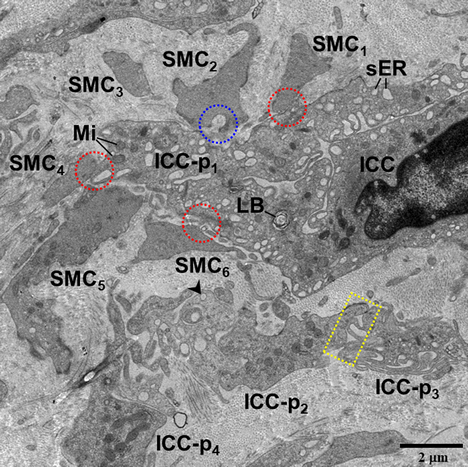Published online by Cambridge University Press: 23 December 2020

Interstitial cells of Cajal (ICC) play an essential role in the motility of the gastrointestinal tract, and they have been identified in many laboratory animals and in humans. However, the information of ICC in lower animals is still very limited. In the present study, ICC were identified in the gastric muscularis mucosae of an amphibian—the Chinese giant salamander, by c-Kit immunohistochemistry and transmission electron microscopy. ICC showed c-Kit immunoreactivity and had spindle-shaped cell bodies and 1–2 long processes. ICC were located between smooth muscle cells (SMC) in gastric muscularis mucosae. Ultrastructurally, ICC appeared as polygon-, spindle-, and awl-shaped with long cytoplasmic prolongations between SMC. ICC had distinctive characteristics, such as nuclei with peripheral electron-dense heterochromatin, caveolae, and abundant intracytoplasmatic vacuoles, mitochondria, and rough endoplasmic reticula. Moreover, lamellar bodies and two types of condensed granules were observed in the cytoplasm of ICC. Notably, ICC establish close contacts with each other. Moreover, ICC establish gap junctions with SMC. In addition, ICC were frequently observed close to nerve fibers. In summary, the present study demonstrated the presence of ICC in the gastric muscularis mucosae of the Chinese giant salamander.